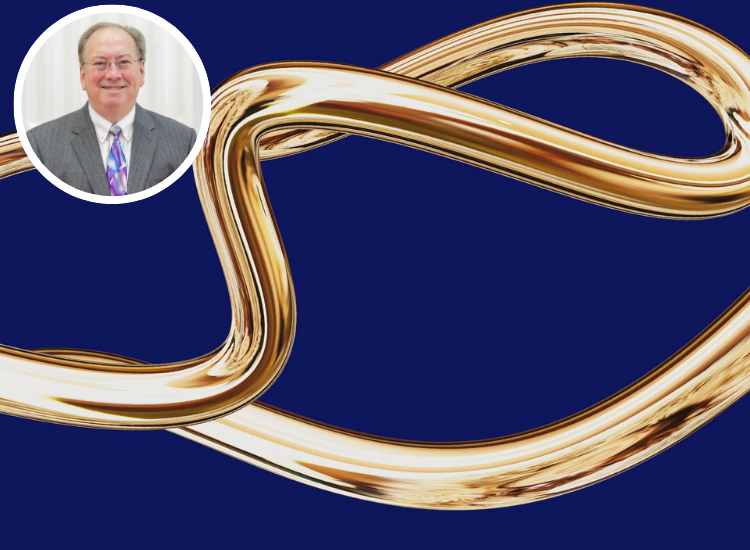Professor Michael Mainelli, President of the London Chamber of Commerce and Industry and a former Lord Mayor of London, is a distinguished scientist-economist and award-winning author with decades of experience advancing finance, technology, and sustainability. His innovative work has shaped global industries and fostered better decision-making worldwide. In an interview for Gold Network, we discuss systemic thinking, innovation, and sustainability across the gold value chain.
Given your commitment to championing societal progress through better financial decisions, what role do you think gold plays in supporting economic resilience and societal development?
Gold has always been a store of value, a medium of exchange, and a hedge against uncertainty. It serves as an anchor in economic systems, particularly in times of crisis. However, its societal role transcends financial security. Gold’s historical and cultural significance reinforces trust within systems, which is crucial for economic resilience. For societal development, gold-backed initiatives—such as microfinance programs or infrastructure funding in developing economies—can offer stability and long-term value. But to maximize its contribution, we must integrate transparency, efficiency, and sustainability into the gold market.
With Z/Yen’s portfolio including mining-related ventures, what innovative approaches have you seen or supported that could transform the gold value chain?
At Z/Yen, we’ve explored innovations such as blockchain for supply chain transparency, enabling end-to-end tracking of gold from mine to market. This ensures ethical sourcing and combats issues like conflict gold. Additionally, we’ve seen advancements in technology to reduce environmental impacts, such as cleaner extraction methods and the recycling of electronic waste for gold recovery. Collaborating with mining ventures, we’ve supported financial instruments like gold-backed digital currencies and carbon-offset mechanisms for the industry. These innovations create accountability and align the gold value chain with broader ESG goals. Most recently we’ve been exploring the combination of virtual and physical using technology such as that from Valaurum, precise micro layers of gold protected by layers of durable polymer that is flexible, durable, and easy to store.
Looking ahead, what are the key trends and opportunities you believe will define the gold industry over the next decade?
Three key trends stand out:
Technological Transformation: Blockchain and AI will revolutionize traceability, market efficiency, and risk management, making gold a more transparent and accessible asset. Equally though, this will bring gold into more direct competition with cryptocurrencies. This competition will probably centre on the concept of ‘backed’ gold products versus ‘unbacked’ cryptocurrency tokens. I’ve addressed this topic over the years in talks on crypto cockroaches versus gold bugs. Will either break out of being niche asset classes?
Sustainability Initiatives: Investors and regulators will demand stronger ESG compliance, encouraging mining operations to adopt greener practices and ensure ethical sourcing. This puts much more emphasis on traceability. I’ve emphasised that one great area for genuine technical research is traceability. There have been numerous attempts, some shallow some deep. But virtually all of them, even the deep ones, have been unsuccessful.
Digital Gold: The rise of gold-backed digital currencies and tokenized assets will democratize access to gold, allowing smaller investors to participate in the market. The industry’s opportunity lies in aligning itself with global priorities, such as decarbonization and equitable resource distribution, while maintaining its status as a safe-haven asset.
In The Price of Fish, you challenge conventional thinking by examining the complex, cyclical, and interconnected nature of global systems. How can the gold industry apply these principles to navigate its own ‘wicked problems,’ such as sustainability, resource management, and the ethical sourcing of gold, while contributing to a more balanced global economy?
The gold industry must embrace systems thinking. This begins with recognizing the interconnectedness of environmental, economic, and social factors. Sustainability isn’t just a single challenge; it’s a network of challenges. For example:
- Circularity: Invest in recycling gold from electronic waste to reduce dependency on mining. The implication being that unless demand increases the interest in mining might drop.
- Dynamic Governance: Use predictive analytics and scenario planning to anticipate and mitigate future risks. This is much wider than the supply chain, encompassing, trade, tax regimes, regulation, and industrial uses.
- Collaborative Solutions: Partner with governments, NGOs, and communities to ensure fair resource allocation and ethical sourcing. The key is to shift from short-term, profit-driven thinking to a long-term perspective that values stability, equity, and resilience.
Based on your extensive experience, what advice would you give to emerging leaders looking to make an impact at the intersection of finance, technology, and the gold industry?
First, focus on integrity and innovation . The gold industry is ripe for disruption, but progress hinges on trust—whether in blockchain systems for transparency or sustainable mining technologies. Second, understand the global system. Gold operates at the nexus of geopolitics, economics, and cultural heritage. Leaders need to think holistically, bridging gaps between stakeholders. Third, champion ESG principles. I’ve touched on Environment above, but Social issues such as child labour, aboriginal rights, or inequality matter; as do Governance reforms, a traditional weak spot of gold and other resources in developing countries. The future lies in sustainable practices that balance profitability with purpose. Finally, remain curious and collaborative. Building networks across finance, technology, and natural resources creates synergies that amplify impact.

